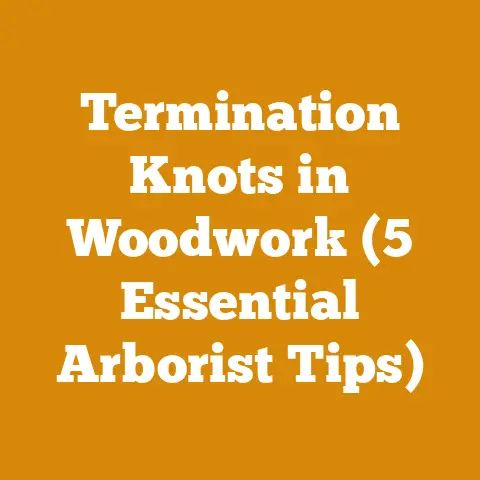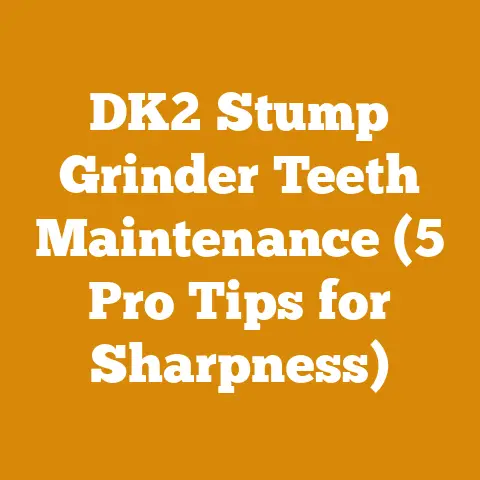Dog Ear Boards Guide (7 Expert Tips for Perfect Fence Edges)
Dog Ear Boards Guide: 7 Expert Tips for Perfect Fence Edges
Have you ever admired a beautifully crafted fence, its dog-eared boards lining up perfectly, creating a seamless wave of wood? Or perhaps you’ve struggled to achieve that same level of perfection, ending up with uneven edges and a fence that looks… well, less than professional. I’ve been there. I remember my first fence project – a well-intentioned disaster. The dog ears looked more like mangled cat ears, and the whole thing leaned precariously. It was a humbling experience, but it ignited a passion for learning the craft.
Over the years, I’ve built countless fences, experimented with different techniques, and learned from my mistakes (and the mistakes of others!). Now, I’m going to share my hard-earned knowledge with you. This guide is packed with expert tips and practical advice to help you create a fence with perfect dog-eared edges, a fence you can be proud of. Let’s dive in!
Understanding Dog Ear Boards: The Foundation of Your Fence
Before we get into the nitty-gritty, let’s make sure we’re all on the same page about what dog ear boards actually are.
What are Dog Ear Boards?
Dog ear boards are fence boards with the top corners diagonally cut off, creating a distinctive “dog ear” shape. This simple design adds a touch of visual appeal to a fence, softening the straight lines and providing a more finished look. They are typically used for privacy fences, offering both security and aesthetic value.
Why Choose Dog Ear Boards?
- Aesthetics: The rounded corners offer a softer, more visually appealing alternative to square-cut boards.
- Cost-Effectiveness: Dog ear boards are often more affordable than other fence board options.
- Ease of Installation: Their uniform shape makes them relatively easy to install, especially for DIYers.
- Durability: When properly treated and installed, dog ear boards can provide years of reliable service.
Common Types of Wood for Dog Ear Boards
The type of wood you choose will significantly impact the longevity and appearance of your fence. Here are some popular options:
- Pressure-Treated Pine: This is the most common and cost-effective choice. The pressure treatment process protects the wood from rot, decay, and insect infestation. It’s essential to choose pressure-treated lumber specifically rated for ground contact if the boards will be in direct contact with the soil.
- Cedar: Cedar is a naturally durable wood that resists rot and insects. It has a beautiful reddish-brown color and a pleasant aroma. Cedar is more expensive than pressure-treated pine but offers superior longevity and aesthetic appeal.
- Redwood: Similar to cedar, redwood is naturally resistant to decay and insects. It has a rich, reddish-brown color and a smooth texture. Redwood is another premium option, often used for high-end fences.
- Spruce/Fir: While less durable than cedar or redwood, spruce and fir can be used for dog ear boards, especially if they are properly treated and sealed. They are generally more affordable than cedar or redwood.
Takeaway: Understanding the characteristics of different wood types is crucial for selecting the right material for your fence project. Consider your budget, desired aesthetic, and the climate in your area when making your decision.
Tip #1: Precision Cutting: Setting Up for Success
The key to perfect dog ears lies in precise and consistent cutting. This starts with having the right tools and setting up your workspace properly.
Tools You’ll Need:
- Circular Saw: A circular saw is the workhorse for cutting dog ear boards. Choose a saw with a sharp blade designed for cutting wood. I personally prefer a 7 1/4″ circular saw with a 24-tooth carbide blade for its versatility and cutting speed.
- Miter Saw (Optional): A miter saw can be used for making precise angle cuts, but it’s not essential. If you have one, it can speed up the cutting process and improve accuracy.
- Measuring Tape: A reliable measuring tape is essential for marking accurate cut lines. I recommend a tape measure that is at least 25 feet long.
- Pencil or Marking Tool: Use a pencil or marking tool to clearly mark your cut lines on the boards.
- Speed Square or Combination Square: These tools are invaluable for ensuring accurate right angles and consistent measurements.
- Clamps: Clamps are essential for securing the boards while you’re cutting them. This helps prevent movement and ensures a clean, accurate cut.
- Safety Glasses: Always wear safety glasses when working with power tools to protect your eyes from flying debris.
- Hearing Protection: Power tools can be noisy, so wear hearing protection to prevent hearing damage.
- Work Gloves: Gloves will protect your hands from splinters and abrasions.
Setting Up Your Workspace:
- Choose a Level Surface: Work on a level surface to ensure accurate cuts. A workbench or a flat section of your yard will work well.
- Provide Adequate Lighting: Good lighting is essential for seeing your cut lines clearly. If you’re working outdoors, position yourself so that the sun is behind you.
- Clear the Area: Remove any obstacles from your workspace to prevent tripping hazards.
- Secure Your Boards: Use clamps to secure the boards to your workbench or cutting surface. This will prevent them from moving during the cutting process.
The Importance of a Sharp Blade:
A sharp blade is crucial for making clean, accurate cuts. A dull blade will tear the wood fibers, resulting in splintered edges and an uneven cut. I recommend sharpening your blade regularly or replacing it when it starts to dull.
My Experience:
I remember one time I tried to cut a stack of dog ear boards with a dull blade. The results were disastrous. The edges were splintered, the cuts were uneven, and the whole process took twice as long. I learned my lesson that day: a sharp blade is worth its weight in gold.
Takeaway: Setting up your workspace properly and using the right tools, especially a sharp blade, are essential for achieving precise cuts and perfect dog ear boards.
Tip #2: The Angle of Attack: Determining the Ideal Cut Angle
The angle at which you cut the corners of your dog ear boards will determine the overall look of your fence. There’s no one-size-fits-all answer here; it’s a matter of personal preference. However, I can offer some guidance based on my experience.
Common Cut Angles:
- 45-Degree Angle: This is a classic and widely used angle for dog ear boards. It creates a clean, symmetrical look.
- 30-Degree Angle: A shallower angle, creating a more subtle dog ear. This is a good option if you prefer a less pronounced look.
- Custom Angles: Don’t be afraid to experiment with different angles to find the look you prefer. You can even create a template to ensure consistency.
How to Determine the Ideal Cut Angle:
- Experiment with Scrap Wood: Before cutting your actual fence boards, experiment with scrap wood to find the angle you like best.
- Use a Protractor or Angle Finder: Use a protractor or angle finder to accurately measure the angle you’re cutting.
- Consider the Overall Look: Think about the overall look you want to achieve with your fence. A steeper angle will create a more dramatic effect, while a shallower angle will be more subtle.
- Match Existing Fences: If you’re adding to an existing fence, try to match the angle of the existing dog ear boards.
Calculating the Cut Length:
Once you’ve determined the angle you want to use, you need to calculate the length of the cut. This will depend on the width of your fence boards.
- Using Trigonometry: You can use trigonometry to calculate the cut length. The formula is: Cut Length = (Board Width / 2) / tan(Angle).
- Using a Template: A simpler method is to create a template out of cardboard or scrap wood. Cut the desired angle on the template and then use it to mark the cut lines on your fence boards.
My Insight:
I’ve found that a 45-degree angle works well for most fences. It provides a good balance between aesthetics and ease of cutting. However, I’ve also used shallower angles for fences where I wanted a more subtle look.
Takeaway: Experiment with different cut angles to find the look you prefer. Use a protractor or angle finder to ensure accuracy and calculate the cut length based on the width of your fence boards.
Tip #3: Mastering the Cutting Technique: Clean Cuts Every Time
Now that you’ve got your tools, your workspace, and your angle figured out, it’s time to start cutting. Here are some tips for mastering the cutting technique:
Cutting with a Circular Saw:
- Mark Your Cut Lines: Clearly mark your cut lines on the boards using a pencil or marking tool.
- Set the Blade Depth: Adjust the blade depth on your circular saw so that it’s just slightly deeper than the thickness of the board.
- Secure the Board: Clamp the board securely to your workbench or cutting surface.
- Align the Blade: Align the blade of the circular saw with the cut line.
- Start the Saw: Start the saw and let it come up to full speed before making the cut.
- Guide the Saw: Guide the saw along the cut line, keeping it straight and steady. Avoid forcing the saw or stopping mid-cut.
- Finish the Cut: Continue cutting until you’ve completely severed the corner of the board.
- Repeat: Repeat the process for the other corner of the board.
Cutting with a Miter Saw:
- Set the Angle: Set the miter saw to the desired angle.
- Secure the Board: Place the board against the fence of the miter saw and hold it securely.
- Lower the Blade: Lower the blade of the miter saw onto the board, aligning it with the cut line.
- Start the Saw: Start the saw and let it come up to full speed before making the cut.
- Make the Cut: Lower the blade completely through the board, keeping it steady.
- Raise the Blade: Raise the blade back up and remove the board.
- Repeat: Repeat the process for the other corner of the board.
Tips for Clean Cuts:
- Use a Sharp Blade: As mentioned earlier, a sharp blade is essential for clean cuts.
- Cut Slowly and Steadily: Avoid rushing the cutting process. Cut slowly and steadily to prevent splintering.
- Support the Board: Support the board on both sides of the cut to prevent it from flexing or vibrating.
- Use a Backer Board: Place a backer board behind the fence board to prevent tear-out on the backside of the cut.
- Sand the Edges: After cutting, sand the edges of the dog ears with sandpaper to remove any splinters or rough spots.
Safety First:
- Wear Safety Glasses: Always wear safety glasses when working with power tools.
- Wear Hearing Protection: Wear hearing protection to prevent hearing damage.
- Keep Your Hands Clear: Keep your hands clear of the blade at all times.
- Unplug the Saw: Unplug the saw before making any adjustments or changing the blade.
My Learning Experience:
I ruined quite a few boards early on by rushing the cutting process. I learned that taking my time and focusing on making clean, steady cuts is the key to success.
Takeaway: Mastering the cutting technique is essential for creating perfect dog ear boards. Use a sharp blade, cut slowly and steadily, and support the board on both sides of the cut.
Tip #4: The Template Trick: Ensuring Consistency and Speed
One of the biggest challenges when cutting dog ear boards is maintaining consistency. It’s easy to accidentally cut a slightly different angle or length, resulting in a fence that looks uneven. That’s where the template trick comes in.
Creating a Template:
- Choose Your Material: You can use cardboard, plywood, or any other rigid material to create your template.
- Cut the Template: Cut the template to the desired shape and angle. Use a protractor or angle finder to ensure accuracy.
- Smooth the Edges: Sand the edges of the template to remove any rough spots or splinters.
Using the Template:
- Position the Template: Place the template on the corner of the fence board, aligning it with the edge of the board.
- Trace the Template: Trace the outline of the template onto the board using a pencil or marking tool.
- Cut Along the Line: Cut along the traced line using a circular saw or miter saw.
Benefits of Using a Template:
- Consistency: Ensures that all of your dog ear boards are cut to the same shape and angle.
- Speed: Speeds up the cutting process by eliminating the need to measure and mark each board individually.
- Accuracy: Improves the accuracy of your cuts by providing a precise guide.
- Reduces Waste: Reduces waste by minimizing the risk of making mistakes.
My Template Story:
I started using templates after I realized how much time and wood I was wasting by trying to cut each board individually. The template not only saved me time and money but also improved the overall quality of my fences.
Takeaway: Using a template is a simple but effective way to ensure consistency, speed, and accuracy when cutting dog ear boards.
Tip #5: Stacking and Cutting: Efficiency in Numbers
If you have a lot of dog ear boards to cut, you can save time by stacking them together and cutting them all at once. This technique requires a little more caution and precision, but it can significantly speed up the process.
How to Stack and Cut:
- Align the Boards: Align the boards so that they are perfectly stacked on top of each other.
- Clamp the Boards: Clamp the boards together securely to prevent them from shifting during the cutting process. Use multiple clamps to ensure a tight grip.
- Mark the Cut Lines: Mark the cut lines on the top board using a pencil or marking tool.
- Cut Along the Line: Cut along the marked line using a circular saw or miter saw. Be sure to use a sharp blade and cut slowly and steadily.
- Check the Cuts: After cutting, check the cuts to make sure they are clean and accurate.
Tips for Stacking and Cutting:
- Use a Sharp Blade: A sharp blade is even more critical when stacking and cutting boards. A dull blade will tear the wood fibers and make it difficult to cut through multiple boards at once.
- Cut Slowly and Steadily: Cut slowly and steadily to prevent the boards from shifting or vibrating.
- Use a Backer Board: Place a backer board behind the stack of boards to prevent tear-out on the backside of the cut.
- Apply Extra Clamping Pressure: Apply extra clamping pressure to ensure that the boards are held together tightly.
- Limit the Number of Boards: Don’t try to stack too many boards at once. A stack of 3-4 boards is usually a good compromise between speed and accuracy.
Potential Challenges:
- Blade Binding: The blade can bind if the boards are not held together tightly enough.
- Uneven Cuts: The cuts can be uneven if the boards shift during the cutting process.
- Increased Risk of Kickback: There is an increased risk of kickback when cutting multiple boards at once.
Safety Precautions:
- Wear Safety Glasses: Always wear safety glasses when working with power tools.
- Wear Hearing Protection: Wear hearing protection to prevent hearing damage.
- Keep Your Hands Clear: Keep your hands clear of the blade at all times.
- Be Aware of Kickback: Be aware of the risk of kickback and take steps to prevent it.
My Experience:
I’ve used the stacking and cutting technique on several large fence projects. It’s a great time-saver, but it’s important to be careful and follow the safety precautions.
Takeaway: Stacking and cutting dog ear boards can save time, but it requires extra caution and precision. Use a sharp blade, cut slowly and steadily, and apply extra clamping pressure.
Tip #6: Sanding and Finishing: The Final Touches
Once you’ve cut all of your dog ear boards, it’s time to sand and finish them. This will remove any splinters or rough spots and protect the wood from the elements.
Sanding:
- Choose Your Sandpaper: Start with a medium-grit sandpaper (100-120 grit) and then move to a fine-grit sandpaper (220 grit).
- Sand the Edges: Sand the edges of the dog ears to remove any splinters or rough spots.
- Sand the Surfaces: Sand the surfaces of the boards to create a smooth, even finish.
- Remove the Dust: Use a tack cloth or a vacuum cleaner to remove the dust from the boards.
Finishing:
- Choose Your Finish: Choose a finish that is appropriate for the type of wood you’re using and the climate in your area. Common options include paint, stain, and sealant.
- Apply the Finish: Apply the finish according to the manufacturer’s instructions.
- Let it Dry: Let the finish dry completely before installing the boards.
Types of Finishes:
- Paint: Paint provides a durable, weather-resistant finish that can be customized to match your home or landscaping.
- Stain: Stain enhances the natural beauty of the wood and provides some protection from the elements.
- Sealant: Sealant provides a clear, protective coating that helps to prevent moisture damage.
My Finishing Preference:
I prefer to use a stain and sealant combination on my dog ear boards. This enhances the natural beauty of the wood while providing excellent protection from the elements.
Takeaway: Sanding and finishing your dog ear boards will not only improve their appearance but also protect them from the elements and extend their lifespan.
Tip #7: Installation Considerations: Putting it All Together
Cutting perfect dog ear boards is only half the battle. Proper installation is just as important for creating a beautiful and durable fence.
Spacing:
- Consistent Spacing: Maintain consistent spacing between the boards to create a uniform look. A spacing of 1/2″ to 1″ is common.
- Use Spacers: Use spacers to ensure consistent spacing. You can use small pieces of wood or plastic spacers.
Alignment:
- Straight Lines: Ensure that the boards are aligned vertically to create straight lines.
- Use a Level: Use a level to check the alignment of the boards as you install them.
Fasteners:
- Use Galvanized or Stainless Steel Fasteners: Use galvanized or stainless steel fasteners to prevent rust and corrosion.
- Proper Length: Use fasteners that are long enough to penetrate the fence posts securely.
Post Spacing:
- 8-Foot Centers: Space your fence posts no more than 8 feet apart.
- Soil Conditions: Adjust post spacing based on soil conditions. Softer soils may require closer post spacing.
My Installation Tip:
I always use a string line to ensure that my fence posts are aligned properly. This helps to create a straight and level fence.
Takeaway: Proper installation is essential for creating a beautiful and durable fence. Pay attention to spacing, alignment, and fasteners.
Final Thoughts: Your Perfect Fence Awaits
Building a fence with perfect dog ear boards is achievable with the right tools, techniques, and a little patience. By following these 7 expert tips, you can create a fence that is both beautiful and functional, a fence that you can be proud of for years to come. Remember to prioritize safety, take your time, and don’t be afraid to experiment. Now, go out there and build the fence of your dreams!






